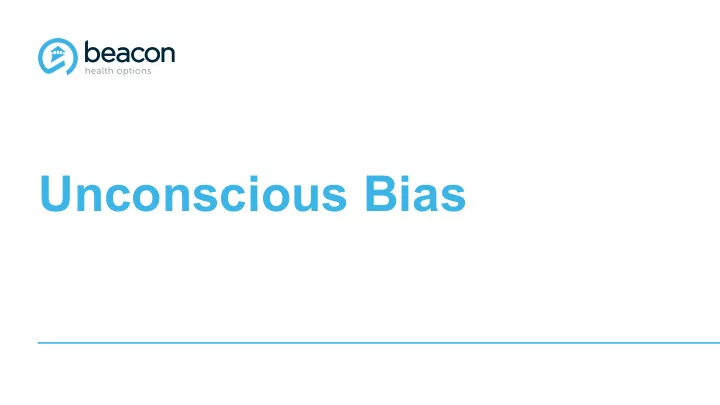

Unconscious Bias 1
Questions to Start: • Are we aware of our unconscious biases? Do we accept them? • What types of biases are you aware of? • Do you have experience with your own or seen biases in others? • Activity: You are working at a car dealership. Describe someone who walks in that you wouldn’t think might buy a car 2
What is Unconscious Bias? • Our unconscious biases are simply our natural people preferences . Biologically, we are hard- wired to prefer people who look like us, sound like us and share our interests. Social psychologists call this phenomenon "social categorisation‟ where we sort people into groups. • This preference bypasses our normal, rational and logical thinking. We use these processes very effectively (we call it intuition ) but the categories we use to sort people are not logical, modern or perhaps even legal. (ecu.co.uk) 3
Possible Causes • In addition to cultural backgrounds, pop culture norms, perpetuating stereotypes • Bypassing rationality & logic • Assumptions “positive or negative” 4
New Concept- Selective Attention • Selective attention is a cognitive process in which a person attends to one or a few sensory inputs while ignoring the other ones. • Selective attention limits you from seeing the bigger picture • By including a variety of experiences, expertise, and points of view in our working groups and teams, you get benefits and perspective that you wouldn’t have seen otherwise! 5
Selective Attention • How do you think this video is a representation of selective attention? What did you not see? • Confronting selective attention is an important step in addressing unconscious bias • So addressing unconscious biases not only prevents losses in diversity, but also can contribute to innovative thinking and increase productivity 6
Self Awareness “To know the true reality of yourself, you must be aware not only of your conscious thoughts, but also of your unconscious bias and habits” (Anonymous) 7
Self Awareness Cont. “Positive Affirmations can also be a form of bias” 8
Awareness to Action • Offer awareness training (Should be a safe place for organization members to become mindful in decision making) • Label the type of bias which may occur • Conversation (all levels) about what biases are present in the company and steps that may be taken to minimize them 9
Preventative Methods in the Workplace • Cultural Awareness and Intelligence (Alternate perspectives) • Attitude, Civility, Empathy • Valuing Diversity/Inclusion (Understanding that we each share the same characteristic of “Difference”) • Performance appraisal (Feedback on work performance) 10 10 10 10
Preventative Methods Continued • Role model and encourage (modeling may reduce perceptions and highlight diversity) • Choosing what is comfortable & familiar- formation of exclusive social groups during breaks and after work can create a bias state of mind • Positive thoughts promotes appropriate behavior 11 11 11 11
Questions to Follow Up On How do we measure/determine unconscious biases? The Implicit Association Test (IAT) is a tool developed jointly by Harvard University, University of Washington, and University of Virginia 12 12 12 12
Thank You! • Remember that you are not alone - we are all a participant of unconscious bias at one point or another • You took an important step today • Confronting unconscious biases is a continuous process, not one single event. 13 13 13 13
Thank You Thank You Contact Us Please contact your Employee Assistance Program with any questions 14 14 14 14
Recommend
More recommend